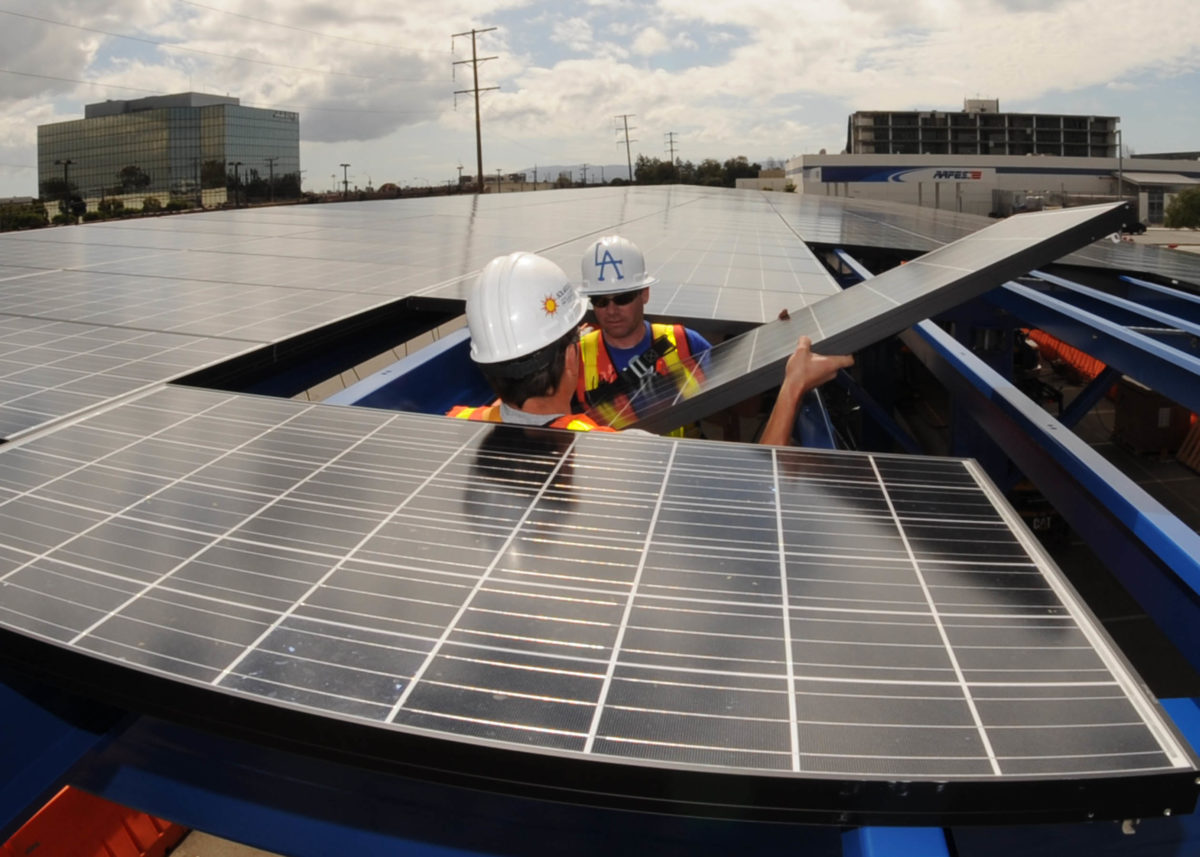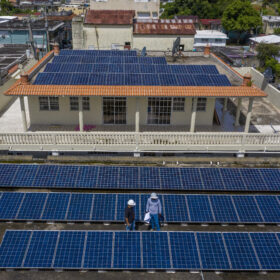Over the first year of Joe Biden’s presidency, the news has been dominated by the administration’s efforts to pass two major pieces of legislation. The first, often called the “bipartisan infrastructure bill,” was signed into law in November and allocated $1 trillion in spending on everything from transportation to utilities to roads and bridges. The second bill, the Build Back Better Act (BBBA), is frequently referred to as the “social bill,” designed to address and fund programs for childcare, housing, education and addressing climate change.
For a period of time, these pieces of legislation were linked in the hopes of passing them together, or one immediately after the other. However, different priorities, ideological perspectives and agendas from both Members of the House and Senate dictated them moving separately. The outcome of this decision created a specific problem: how should we talk about the second piece of legislation?
While Biden’s first major spending bill passed with bipartisan support, its companion piece of legislation is taking longer to progress to the President’s desk. One reason for this is the challenge of landing on tangible ways to define what the BBBA is. The ongoing messaging around both the already-passed infrastructure bill and the BBBA obscures one of its important aspects: it’s also an infrastructure bill. Nearly one-third of the funding allocated in the BBBA is dedicated to clean energy and climate-related infrastructure investments; an unprecedented amount that represents the largest step taken in American history to tackle greenhouse gas emissions and to meet net-zero goals.
The BBBA and clean energy infrastructure
The details of the BBBA are often lost in the discussions of political horse trading, but the clean energy provisions of the bill will make it significantly easier for everyday Americans to adopt clean energy technologies. This in turn will allow individuals to lower their monthly energy costs, build resilience against outages, and simultaneously make a difference in the fight against climate change. These concerns are top of mind for American voters. According to a recent survey conducted by SunPower, the top reasons cited by homeowners with solar energy systems are lower energy costs (92%), resilience during power outages (88%) and a reduced carbon footprint (73%). Notably, the survey included homeowners across the political and geographic spectrum.
The most important infrastructure provision in the BBBA for our industry is a ten-year extension of the solar Investment Tax Credit (ITC), restoring both the residential cash and loan credit for individuals and the commercial, utility-scale, community, and residential third-party ownership credit for businesses to a tax credit value equivalent to 30% of the capital cost of the solar system. The solar ITC has been federal policy since 2006, and it has proven over the last 15 years to be the single most effective policy tool to support the adoption of solar energy in the U.S.
Remarkably, the BBBA doesn’t just extend the solar ITCs — it strengthens them. These crucial policies are modified as part of this bill’s extension, making it easier for both individuals and businesses to implement solar energy, battery storage, microgrid solutions and associated grid interconnection. This supports the critical resilience investments we so desperately need as Americans deal with climate change-induced outages.
In addition, the bill provides an option for the tax credit to be refundable for individuals, and a direct payment for businesses. This means that low-income families without sufficient tax liability can still benefit from the individual tax credit, and businesses who don’t have easy access to tax equity financing can still benefit from the business tax credit. Finally, the BBBA provides an additional boost to qualifying solar projects in low-income and historically disadvantaged areas, representing an additional step towards environmental justice in the U.S.
The power of the ITC
It’s impossible to overstate the importance of the ITC in supporting renewable energy growth in the U.S. According to the Solar Energy Industries Association (SEIA), the residential and commercial solar ITC has helped the U.S. solar industry grow by more than 10,000% since its implementation. Over the last decade, the industry has seen average annual growth of 50%. The ITC hasn’t just resulted in an increase in solar installments — it has also injected billions of dollars into the American economy and created hundreds of thousands of well-paying solar jobs across the country.
According to the original legislation, the solar ITC was scheduled to drop from 26% to 22% in 2021. However, a federal spending package passed in late 2020 extended the 26% rate for an additional two years. This seemingly small difference — an extra 4% for two months — is expected to inject an extra $22 billion into the American economy while spurring an additional 20 GW of solar development over the next five years.
To be clear, a 26% tax credit for two years is projected to inject an additional $22 billion into the U.S. economy. The BBBA would provide up to a 30% tax credit for ten years to those who meet specific criteria. This level of certainty for the clean energy sectors provides a market signal that will result in an unprecedented boost to the economy and jobs market.
The new sales pitch
In 2021, the news was dominated by climate change, from wildfires and deep freezes to the major promises made at the COP26 UN Summit. The looming threat of climate change is top of mind for American voters, and the Biden administration can demonstrate the historic steps they’re taking to address our warming planet by emphasizing the clean energy provisions in the BBBA. This is a perfect opportunity for Congress and the administration to pivot on messaging and to clearly define parts of the BBBA as clean energy infrastructure legislation.
President Biden and members of Congress can stress the significant benefits the BBBA will bring to American homeowners, particularly those who live in communities that have historically had limited access to solar energy. Most importantly, they can highlight the clean energy infrastructure that will be supported by this new legislation — delivering key enhancements to our aging electricity grid and providing members of Congress with endless opportunities to attend the openings of new solar, battery storage, and microgrid projects serving constituents and communities across the country.
The BBBA is a winning message for grid resilience, the environment, for elected officials, and for everyday Americans. It’s time to get it over the finish line.
Suzanne Leta is head of policy and strategy for SunPower.
The views and opinions expressed in this article are the author’s own, and do not necessarily reflect those held by pv magazine.
This content is protected by copyright and may not be reused. If you want to cooperate with us and would like to reuse some of our content, please contact: editors@pv-magazine.com.







By submitting this form you agree to pv magazine using your data for the purposes of publishing your comment.
Your personal data will only be disclosed or otherwise transmitted to third parties for the purposes of spam filtering or if this is necessary for technical maintenance of the website. Any other transfer to third parties will not take place unless this is justified on the basis of applicable data protection regulations or if pv magazine is legally obliged to do so.
You may revoke this consent at any time with effect for the future, in which case your personal data will be deleted immediately. Otherwise, your data will be deleted if pv magazine has processed your request or the purpose of data storage is fulfilled.
Further information on data privacy can be found in our Data Protection Policy.